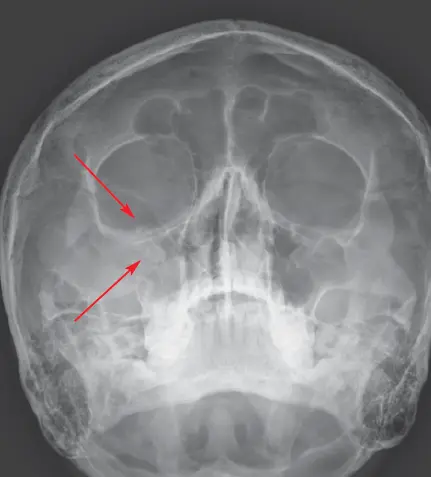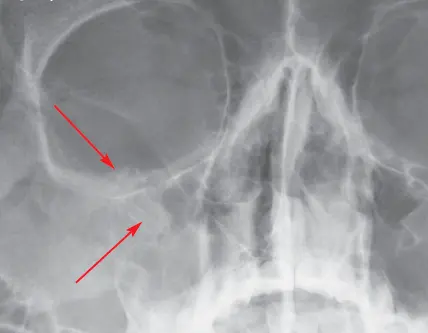Published on
Differential Diagnosis
- Orbital floor fracture
- Soft tissue edema secondary to trauma
- Traumatic diplopia


Diagnosis
This patient had a right orbital floor fracture. Findings include partial opacification of the right maxillary sinus, an irregularity on the inferior orbital rim and a subtle discontinuity on the orbital floor. The most common mechanism is a direct blow to the central orbit from a fist or ball.
Findings/What to Look for
- Orbital fractures can involve any wall of the orbit (medial, lateral, superior or inferior), the orbital rim, or both
- The inferior wall is the most common fractured
- Clinical findings can include:
- Enophthalmos (sunken eyes)
- Diplopia (double vision due to extraocular muscle entrapment)
- Orbital emphysema, especially when the fracture is into an adjacent sinus
- Malar region numbness (due to injury to the infraorbital nerve)
- Hypoglobus (affected eye is lower than unaffected eye)
Pearls for Urgent Care Management
- Cold packs should be applied to reduce swelling
- Referral for ophthalmologic or surgical evaluation is needed
- Surgery may be indicated if there is nerve incarceration, acute enophthalmos or hypoglobus, and limitation of gaze
Acknowledgement: Images and case provided by Experity Teleradiology (www.experityhealth.com/teleradiology).
A 40-Year-Old with Swelling After a Direct Blow to the Eye
1 2
